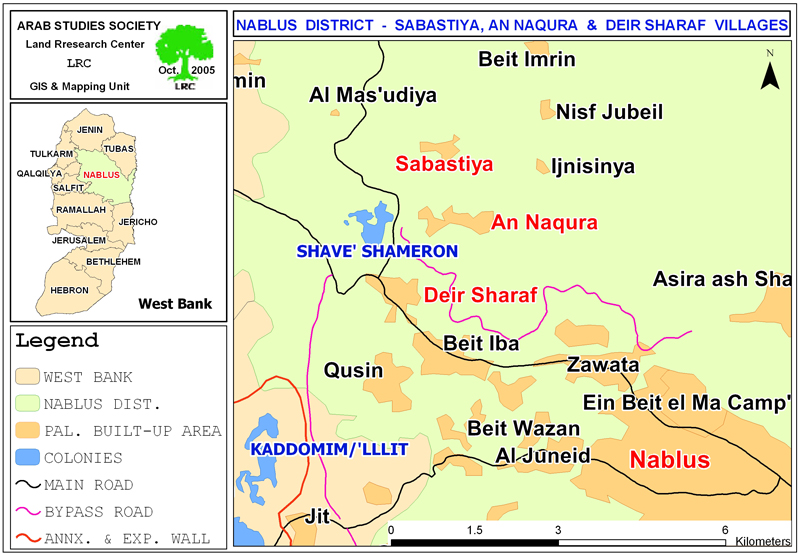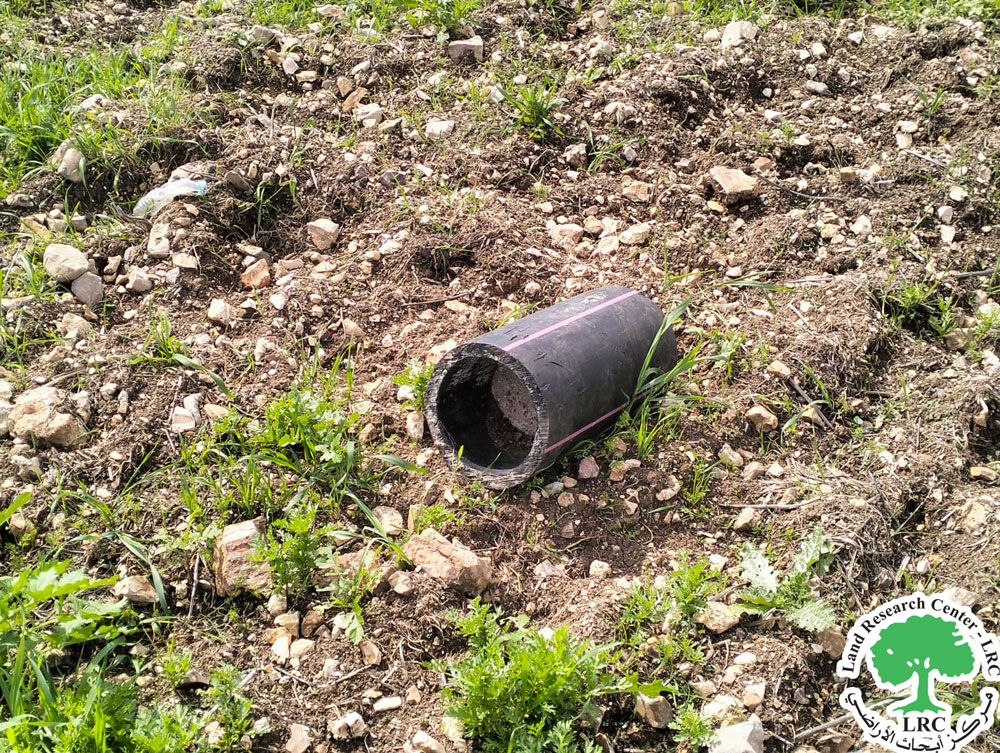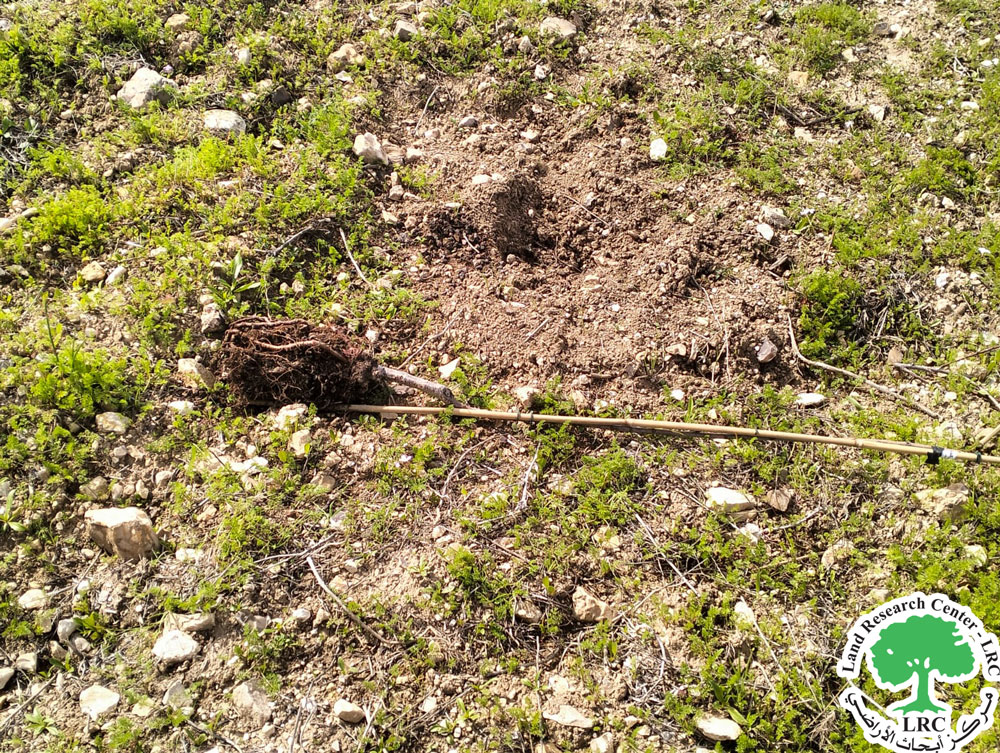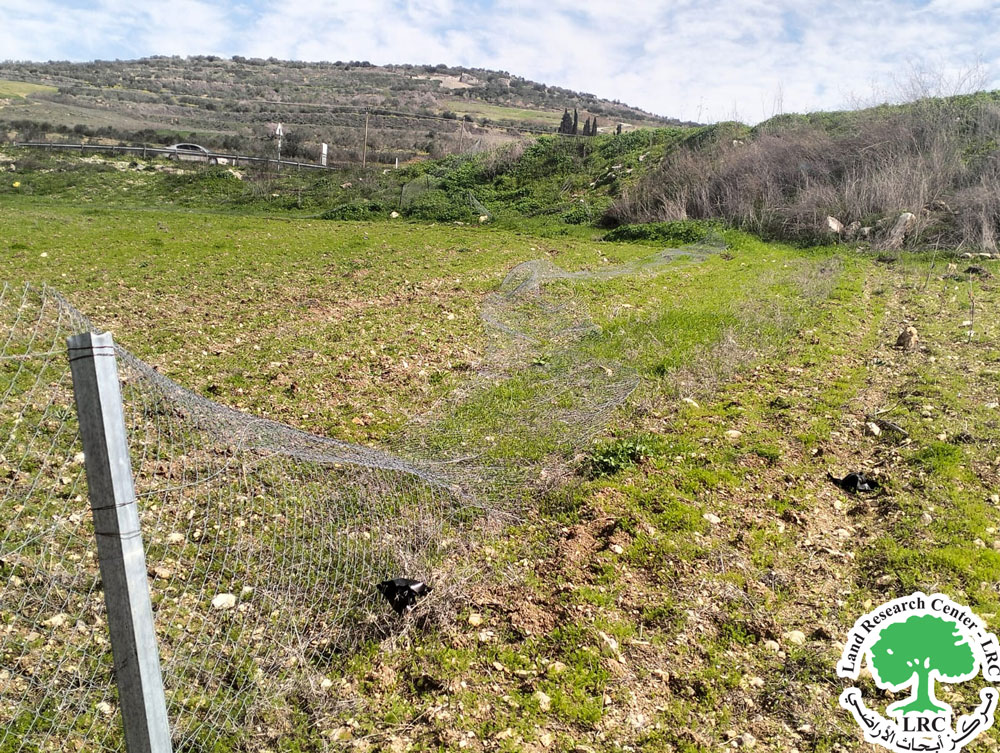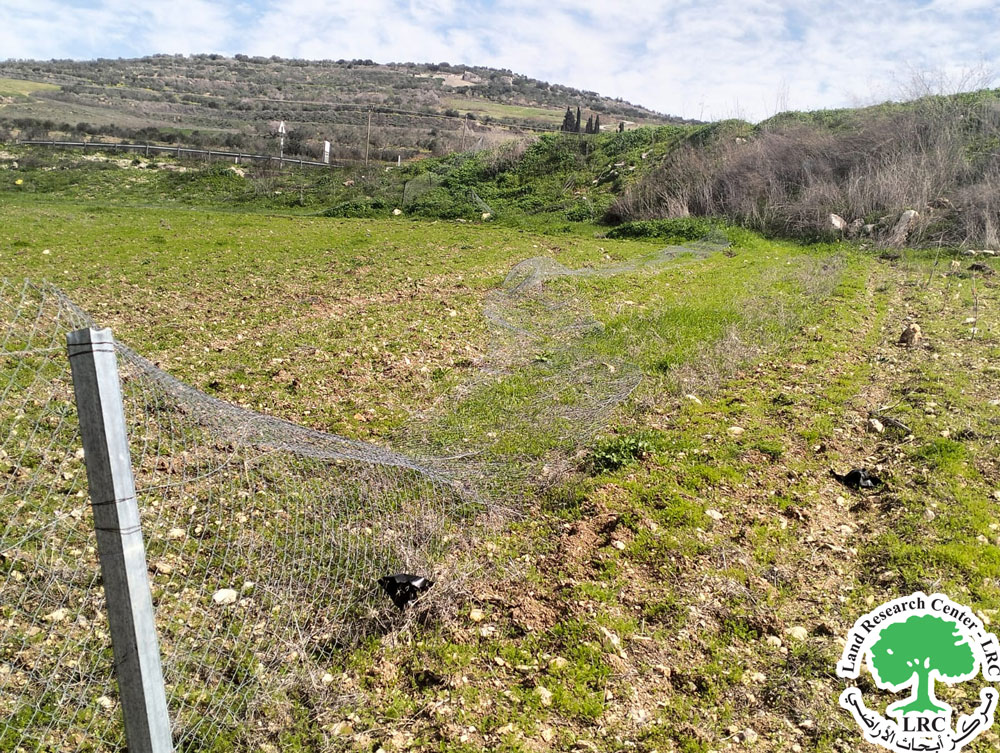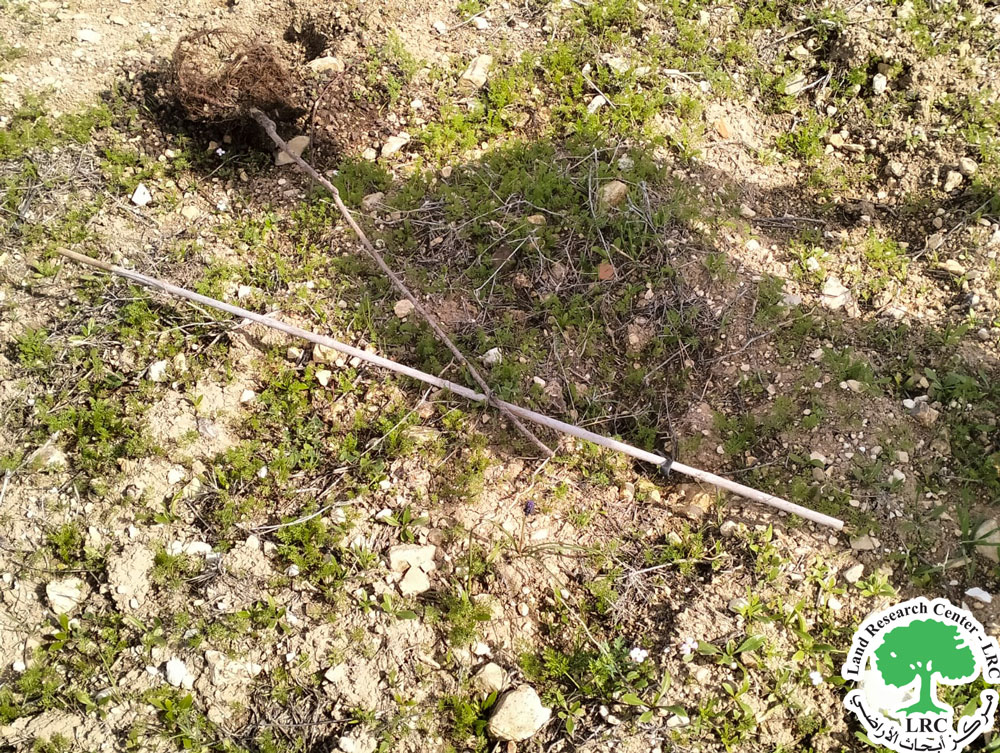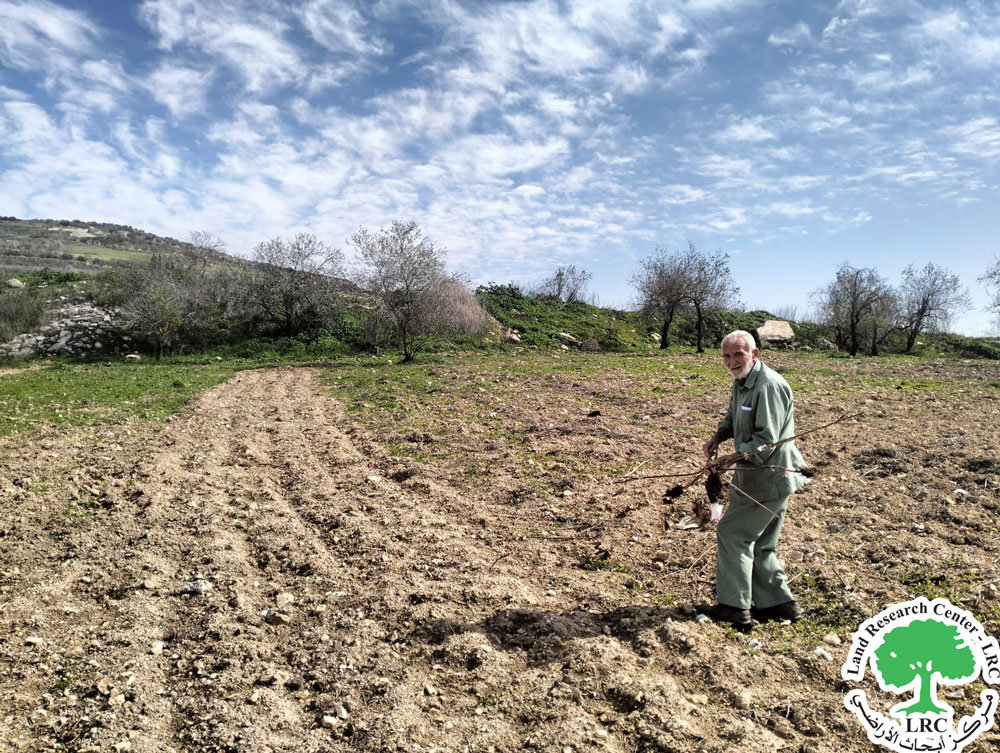Cutting Almond and Olive Seedlings and Destructions of Agricultural Fences in Sebastia village / north of Nablus
Violation: Cutting and destruction of almond and olive seedlings.
Date: February, 14th, 2025
Location: Sebastia town / north of Nablus
Perpetrators: Colonists of ‘Shavi Shomron’ settlement.
Victims: Several farmers in the area
Details:
‘’In the evening hours of Friday, February, 14th 2025, a group of settlers targeted the ‘’ Mawaris Al Abour ‘’area, north Sebastia village, within natural block number’’ 21’’ and plots 14, 15, and 17 of the villages lands.’’
The settlers uprooted 183 almond and 40 olive seedlings, in addition to damaging fences surrounding a piece of agricultural land. The attack on the land was carried out in a brutal manner, reflecting the deep hatred of the settlers towards Palestinian lands. It is worth noting that the targeted location is situated less than 900 meters from the newly established pastoral outpost on the lands of Ramin village.’’
The following table provides details of the damages based on field monitoring at the site of the violation :
Impacted Farmer | Family Member | Children Number | Female Number | The area in dunams | The damage |
Bilal Mohammad Ali Omar | 2 | 0 | 1 | 10 | Destruction of 90 almond saplings. Aging 2 years old |
Fadi Abd Al Raheem Aliwi | 6 | 4 | 2 | 23 | Destruction 40 olive saplings, Destruction of 93 almond saplings. Destruction of 180 meters of fence. Destruction and theft a waster pump used for irrigation.
|
Roshdi Ahmad Masoud | 4 | 1 | 2 | 4 | Destruction of 110 meters of fence |
Sameer Rashed Masoud and his partner Motasem Tawfiq Issa | 9 | 3 | 4 | 33 | Destruction of 260 meters of fence. |
Farmer Fadi Aliwi told to the LRC's field researcher:
‘’My land has been subjected to multiple acts of sabotage by the settlers. The previously cut the fence surrounding my land, and later, they damaged the irrigation network. However, despite I have faced significant challenges, I continue to replant the land. I have filed numerous complaints to the occupation police, but without any benefit. Nevertheless, I insist to keep cultivating my land no matter the cost, I also face harassment while present on my land, including attempts by the settlers to physically assault me.’’
About Sebastia :
The town of Sebastia is located 12 kilometers northwest of the city of Nablus. It is bordered to the north by the village of Burqa, to the west by the village of Al-Masoudiya, to the east by the village of Nisf Jubeil, and to the south by the villages of Al-Naqura and Deir Sharaf. The population of Sebastia was 3,205 as of 2017. The total area of the village is 16,225 dunams, of which 521 dunams are designated as the built-up area of the village. According to the Oslo Accords, the village lands are classified as follows:
- Area A: 8,942 dunams
- Area B: 4,980 dunams
- Area C: 2,303 dunams
Attacks on Trees: A Form of Israeli Violations Against the Palestinian Environment:
The frequent attacks by settlers and the army on Palestinian trees are increasing notably. According to the research team at the Land Research Center, the occupation targeted more than 57,323 of trees and seedling from the beginning of 2024 until October 31 2024 – the highest since 10 years ago. 90% of these trees have been completely destroyed, that warns a real environment disaster especially, since trees are lost whether by cutting or burning or poisoning. This results in a decrease in the number of trees, which means a decrease in the area of vegetation cover. Which provides the region with large amounts of oxygen and rids it of carbon gas, and when trees are lost the animals will not able find shelter and food , threating the extinction of some animal due to the destruction of their nature habitat and which harms Biodiversity.
For more information on the occupation’s assaults on Sabastia village :
Legal Commentary :
The Palestinian environment, in general, is subjected to numerous environmental violations by the Israeli occupation, disregarding all international and national laws and conventions related to the protection of environmental rights. The right to live in a clean and healthy environment is a fundamental human right that has been inherent to mankind since the beginning of creation. The occupation often attempts to present itself as being concerned with international environmental issues, despite having signed major environmental protection agreements, such as the Basel Convention in 1989, the Rotterdam Convention in 2008, the Stockholm Convention in 2001, and the Ramsar Convention in 1971, as well as air quality and climate protocols. Nevertheless, Israel continues to violate all of these treaties without accountability or oversight.
In addition to the provisions regarding the right to enjoy a clean and healthy environment for all those under military occupation according to international laws, conventions, and treaties, such as the International Covenant on Economic, Social, and Cultural Rights, adopted by the United Nations General Assembly in Resolution 2200A (d-21) on December 16, 1966, in Article (1), paragraph (2): "...All peoples, in pursuit of their own objectives, have the right to freely dispose of their natural wealth and resources without prejudice to any obligations arising from the international economic cooperation based on the principle of mutual benefit and international law. In no case shall a people be deprived of its means of subsistence...".
Undoubtedly, the violations carried out by the Israeli occupation contradicts with the laws of the occupation state itself before any other laws. Referring to the details of this case, the Israeli Penal Code of 1977 and its amendments stipulate that trespassing on someone else's property to commit a criminal act punishable by law is an offense. By reading Article 452 of the Israeli Penal Code, we find that the law punishes those who commit an offense or cause damage to property such as (a water well, a water reservoir, a dam, a floodgate, planted trees, a bridge, a tank, or a water cistern) with a penalty of five years imprisonment.
In addition to, Article 447 of the Penal Code states: "Anyone who does any of the following with the intent to intimidate, insult, or harass the property owner or commit a crime shall be punished by imprisonment for two years:
(1) Enters or crosses the property;
(2) After entering the property legally, remains there unlawfully.
(b) A crime is committed under this section if the offender carries a firearm or a cold weapon, and the punishment is imprisonment for four years."
By reading the text of this article, we find that the Israeli Penal Code criminalizes the mere act of entering someone else's property without permission, with the intent to insult, harass, or intimidate, and punishes this act with two years of imprisonment. The punishment increases to four years if the offender commits any act on someone else's property using a weapon or a sharp tool, referred to as a "cold weapon." This is explicitly criminalized in the text of Article 447 of the aforementioned Israeli Penal Code. Additionally, a penalty of 5 years imprisonment is imposed on those who cause damage to property mentioned in Article 452. Therefore, the violator, the "settler," should face a compounded violation: the first for entering a property that is not theirs, and the second for trespassing on and cutting down the planted trees, resulting in environmental harm.
Therefore, the Israeli aggressor blatantly violates both international laws and treaties, as well as the internal laws of the "occupying state," in a clear violation. Consequently, the "Israeli judiciary" must hold the settlers accountable and punish them for these actions based on the provisions of their own laws. However, there is no legal accountability for the aggressors by the Israeli judiciary. Despite this, every human being on this earth has the right to live in a clean, healthy, and safe environment, free from any violation or aggression against it.
مشروع: حماية الحقوق البيئية الفلسطينية في مناطق "ج" SPERAC IV - FCDO
Disclaimer: The views and opinions expressed in this report are those of Land Research Center and do not necessarily reflect the views or positions of the project donor; the Norwegian Refugee Council.
إخلاء المسؤولية: الآراء ووجهات النظر الواردة في هذا التقرير هي آراء ووجهات نظر مركز أبحاث الأراضي ولا تعكس بالضرورة وجهات نظر أو مواقف الجهة المانحة للمشروع؛ المجلس النرويجي. للاجئين
